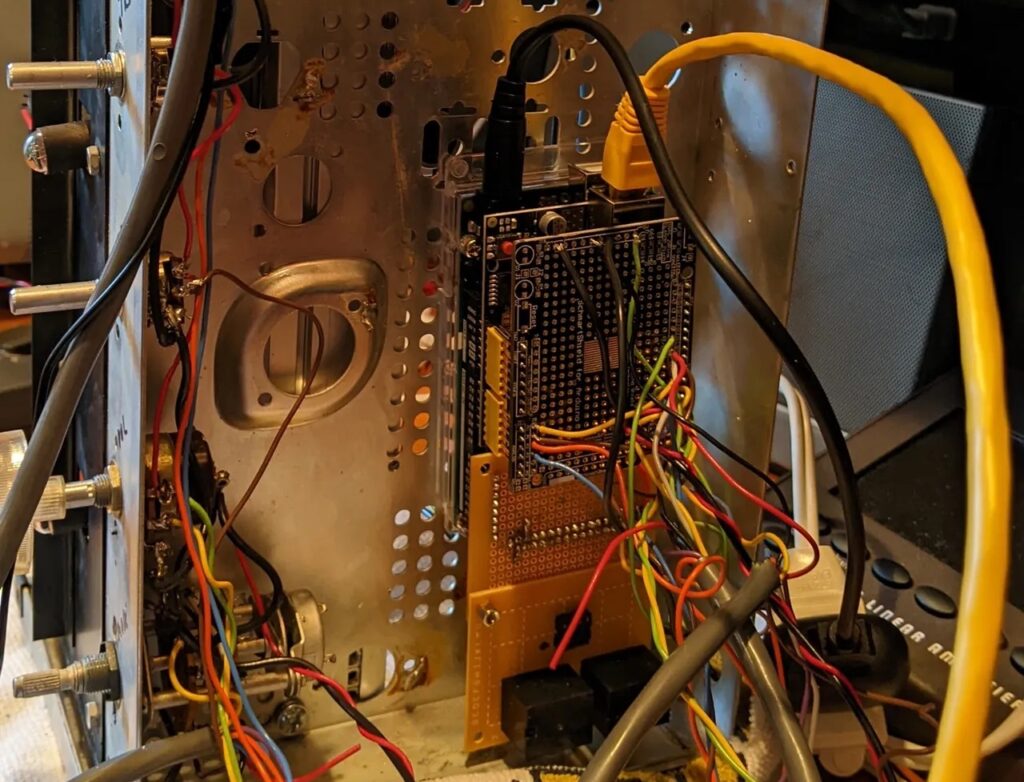1960s stereo console modernized with an Arduino

The aphorism that “they don’t build them like they used to” is especially true of the consumer electronics industry. Most manufacturers today design their product to last only a few years — or with outright planned obsolescence. But mid-century stereo consoles were a different story and resembled high-end furniture that would last. Sherman Banks has a Penncrest stereo console from that era, but its electronics were failing. So he used an Arduino to modernize the unit while retaining the vintage appearance.
This particular console had an AM/stereo FM radio receiver and a built-in phonograph turntable. Unfortunately, the aging electronic components were unreliable and lacked good sound quality. The console itself, however, was in fantastic shape. So Banks wanted to keep it looking as original as possible, but with modern electronics and all of the features they offer. He replaced the radio with a Denon DRA-800H stereo receiver that offered inputs for a turntable and SiriusXM receiver, as well as Bluetooth streaming and Ethernet connections. He also replaced the turntable with a new Denon DP-29F.

Those would have worked just fine, but he wanted the original controls to work. For that, Banks used an Arduino Mega 2560 board. It reads the inputs from potentiometer knobs for volume, radio tuning, input selection, and so on. It then passes that information over to the stereo receiver through an Ethernet Shield. The stereo accepts network commands to change the radio station, inputs, and other important functions. It also outputs that information, which let Banks set the dial to the appropriate position. The Arduino receives the station number and then uses a stepper motor with a leadscrew and block to move the dial indicator back and forth to the correct position.
Now Banks has a stereo console that looks completely vintage, but which offers all of the modern quality and convenience that he could want.